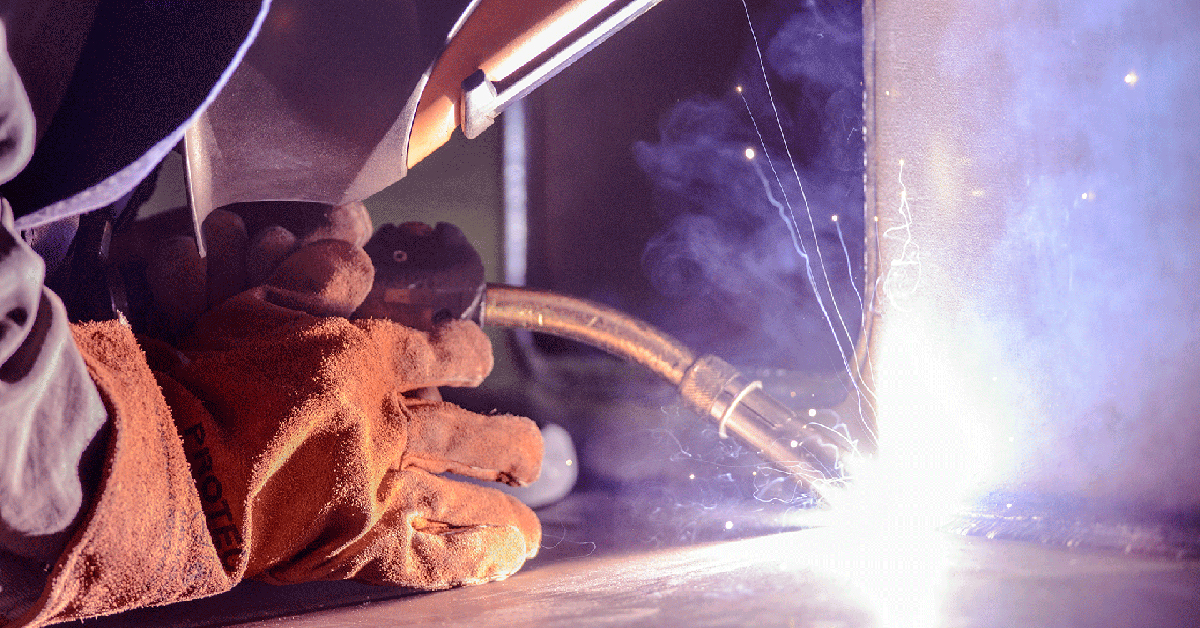Your Total Handbook to Preventing Weld Undercut Like a Pro
Your Total Handbook to Preventing Weld Undercut Like a Pro
Blog Article
Mastering the Art of Welding: How to Prevent Undercut Welding Issues for Flawless Manufacture Results
Performance and accuracy are paramount worldwide of welding, where even the smallest flaw can compromise the structural honesty of a made piece. One typical difficulty that welders face is damaging, an issue that can weaken a weld joint and lead to costly rework. By comprehending the origin creates of undercut welding and applying reliable strategies to avoid it, welders can elevate their craft to new levels of quality (Preventing weld undercut). In the search of remarkable manufacture outcomes, grasping the art of welding to avoid undercut problems is not just an ability yet a need for those making every effort for excellence in their job.
Understanding Undercut Welding

To stop undercut welding, welders must guarantee proper welding criteria, such as adjusting the existing, voltage, travel rate, and maintaining the right electrode angle. Furthermore, making use of the suitable welding strategy for the specific joint setup is important. Utilizing weaving movements or backstepping strategies can help make sure proper weld metal deposition and lower the possibility of undercut formation. Routine examination of welds during and after the welding procedure is additionally important to capture any undercut early and make needed changes to stop additional issues. Preventing weld undercut. By comprehending the root causes of undercut welding and carrying out preventive steps, welders can accomplish high-quality, structurally sound welds.
Reasons For Undercut in Welding
Comprehending the aspects that contribute to undercut in welding is important for welders to create high-grade, structurally audio welds. When the weld steel does not correctly fill the groove formed between the base steel and the formerly deposited weld steel, damaging happens. Several aspects can result in damage in welding. One common reason is too much heat input. Welding at high temperatures for extended durations can lead to the base metal thawing greater than preferred, causing undercut. Inadequate welding incorrect or existing welding rate can likewise add to damage. Inadequate current might not supply sufficient heat to thaw the base and filler metals sufficiently, while extreme speed can protect against appropriate fusion, triggering undercut. Additionally, inappropriate electrode angles or inaccurate lantern manipulation strategies can develop locations of low weld steel deposition, promoting undercut. Understanding these reasons and applying appropriate welding strategies can help protect against undercutting concerns, guaranteeing long lasting and solid welds.
Techniques to stop Undercutting

To mitigate the risk of undercutting in welding, welders can utilize critical welding techniques targeted at enhancing the high quality and stability of the weld joints. One efficient approach is to readjust the welding parameters, such as voltage, present, and take a trip rate, to make certain correct heat input and deposition. Maintaining a suitable electrode angle and making sure constant traveling rate can likewise assist stop undercut. In addition, making use of the proper welding strategy for the details joint setup, such as weave or stringer grains, can add to minimizing undercutting. Preventing weld undercut.
Additionally, proper joint prep work, consisting of making sure clean base materials without impurities and utilizing the suitable welding consumables, is important in avoiding undercut defects. Using back-step welding methods and controlling the weld grain profile can also aid distribute heat equally and lessen the danger of undercut. Regular examination of the weld joint throughout and after welding, as well as implementing quality guarantee procedures, can aid in spotting and resolving damaging issues without delay. By carrying out these techniques faithfully, welders can accomplish remarkable manufacture results with minimal undercut issues.
Significance of Appropriate Welding Criteria
Selecting and preserving ideal welding parameters is vital for attaining effective welds with minimal issues. Welding specifications describe variables such as voltage, existing, take a trip speed, electrode angle, and shielding gas flow rate read here that directly affect the welding procedure. These criteria have to be carefully adjusted based on the kind of material being welded, its thickness, and the welding method utilized.
Proper welding specifications make sure the appropriate quantity of warmth is put on thaw the Recommended Site base steels and filler product evenly. If the criteria are established also high, it can cause excessive heat input, causing distortion, spatter, or burn-through. On the other hand, if the parameters are also reduced, insufficient combination, lack of penetration, or undercutting might happen.
Quality Control in Welding Workflow

Conclusion
Finally, grasping the art of welding requires an extensive understanding of undercut welding, its causes, and strategies to avoid it. By guaranteeing proper welding criteria and implementing top quality assurance practices, remarkable fabrication results can be attained. It is important for welders to consistently pursue excellence in their welding procedures top article to avoid undercut issues and create top quality welds.
Undercut welding, an usual problem in welding procedures, happens when the weld steel doesn't properly fill up the groove and leaves a groove or clinical depression along the welded joint.To protect against undercut welding, welders ought to make sure appropriate welding criteria, such as adjusting the existing, voltage, traveling speed, and keeping the right electrode angle. Insufficient welding existing or incorrect welding speed can likewise add to damage.To reduce the threat of undercutting in welding, welders can utilize critical welding techniques aimed at improving the top quality and integrity of the weld joints.In final thought, understanding the art of welding calls for a detailed understanding of undercut welding, its causes, and techniques to avoid it.
Report this page